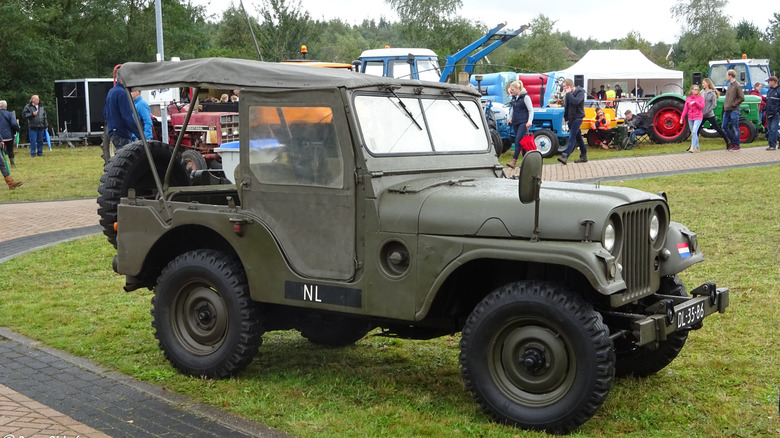Why Willys M38A1 Was Retired From The Military
During the onset of the Korean War in 1950, the U.S. military sought to update its armored light utility vehicle choices from the fairly outdated Willys M38 utility truck used since the end of the 1940s. However, time was of the essence, and research and development for a sturdier, all-terrain, lightly-armored car would take decades to create.
Enter the Willys M38A1 — Willys Motors' and Kaiser Jeep's upgrade to the existing M38. This new lightly-armored vehicle would possess a few key improvements, eventually be produced in high numbers, and it would go on to service militaries across the globe.
Though the M38A1 was not meant to be a long-lasting solution to U.S. military requirements, it suited the need for a lightly armored car that could haul rather large payloads. Eventually, Willys M38A1 would go on to inspire civilian Jeep design, and its influence can be seen in the long-time military armored transport vehicle of choice: the Humvee.
[Featured image by Peterolthof via Wikimedia Commons | Cropped and scaled | CC BY-SA 3.0]
What was the Willys M38A1 Jeep?
The Willys M38A1 is one of the most iconic military vehicles, and it would go on to inspire designs for lightly armored cars used today by militaries around the world. Produced between 1952 and 1971, over 100,000 of these vehicles would be manufactured for both the U.S. and foreign militaries.
Designed by Willys Motors and Kaiser Jeep, it would go on to not only inspire future light-armored car design but would also spawn the CJ-5 in 1955, a civilian variation of the vehicle.
The Willys M38A1 improved upon its predecessor in various ways but was notably visually updated with the introduction of round fenders, a two-piece windshield, and a contoured hood. Internally, there were also other improvements. The M38A1 had a more powerful F4-134 Hurricane engine and an improved T-90 transmission, providing 72 horsepower. Unlike the civilian CJ-5 counterpart, the M38A1 had a more durable frame, better suspension, and a 24-volt waterproof electrical system.
Willys M38A1 Jeep was replaced by the iconic M151
The M38A1 is generally viewed as a reliable stopgap for the U.S. military's need for a lightly armored transport vehicle capable of carrying several hundred pounds. Though the M38A1 was solid for a period of time, eventually, new military-focused technologies that provided more reliability and safety for the vehicle's operators became the preferred mode of transportation. In many ways, the M38A1 was just meant to hold over the needs of the U.S. military until a better solution came along.
The M38A1's replacement would come in the form of the iconic M151 4x4 utility truck developed by the Ford Motor Company. Design for the M151 started in 1951, a year before the M38A1's production began in 1952. The first M151s would see combat in the early 1960s, eventually phasing out use of the M38A1. This utility truck would prove superior to the M38A1 with unibody structure and better suspension. These new design features made it better in combat scenarios and easier and cheaper to manufacture.
Though the M38A1 was the United State's most reliable lightly-armored car while it was in use, it was only a matter of time before a better, more capable vehicle would take its place.
